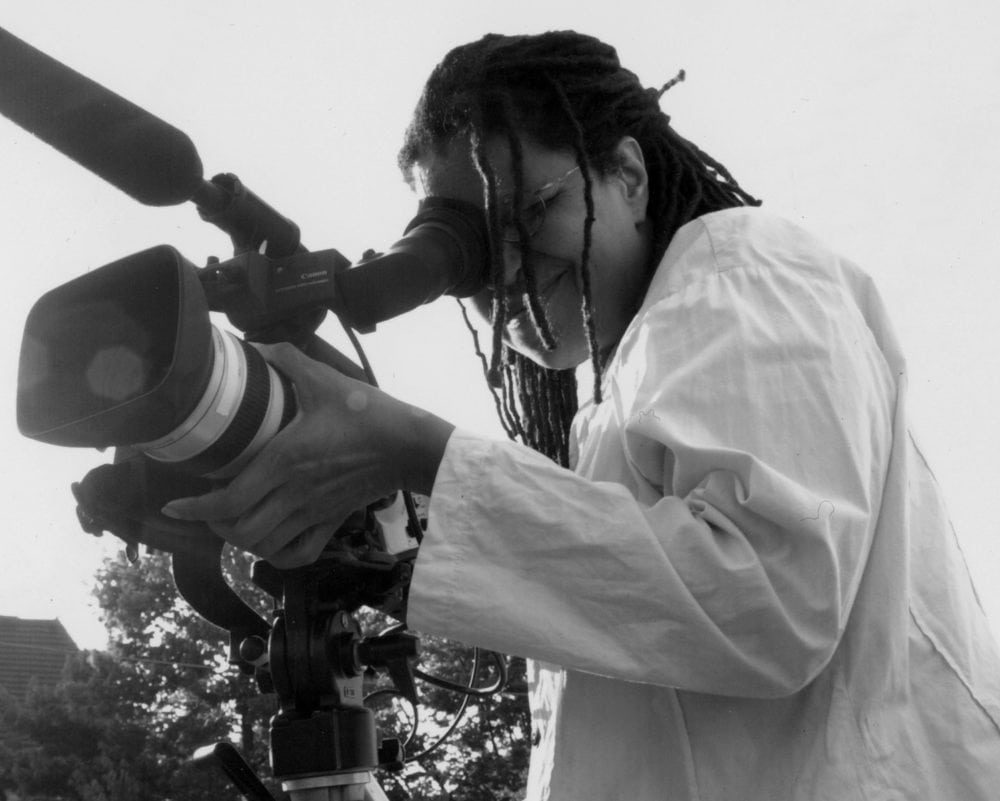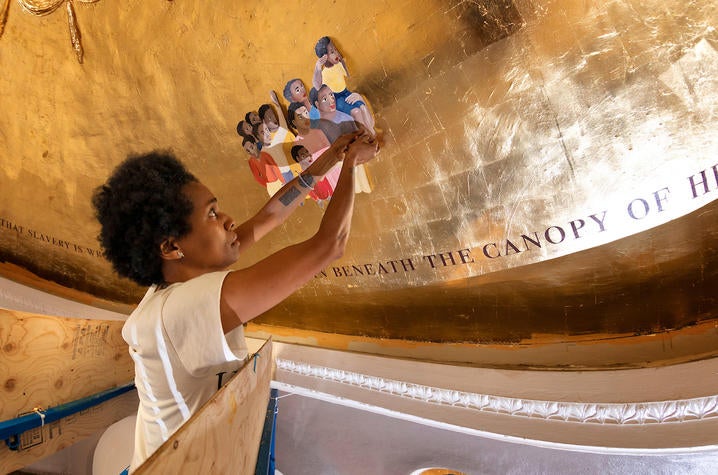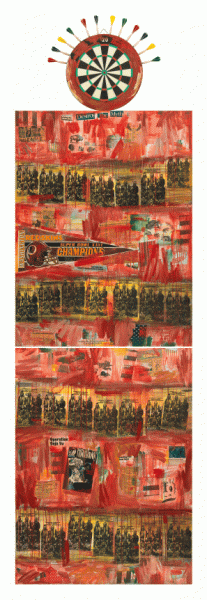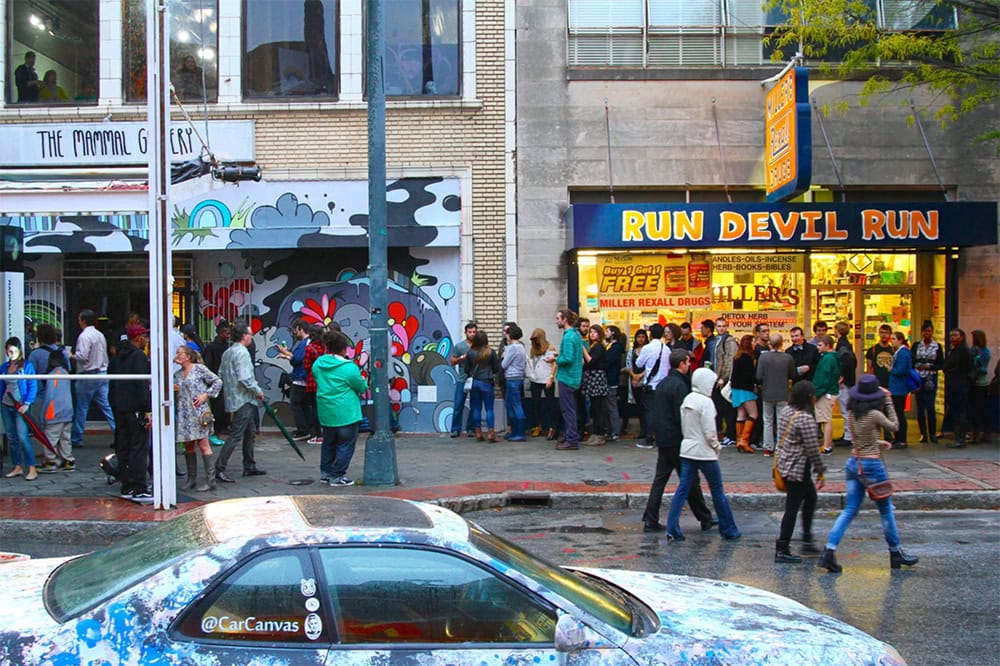
United States Artists awards Linda Goode Bryant the 2020 Berresford Prize
CHICAGO—United States Artists has awarded this year’s Berresford Prize—an annual award that honors cultural practitioners who have contributed significantly to the advancement, wellbeing, and care of artists in society—to activist, gallerist, and filmmaker Linda Bryant. In 1976, Bryant opened Just Above Midtown (JAM), a gallery that launched the careers of many of today’s most well-known Black artists, including David Hammons, Senga Nengudi, Lorraine O’Grady, and Howardena Pindell. . She also made several films, including Flag Wars (2003) with Laura Poitras. She founded the urban farming initiative Project EATS in 2009. Bryant is a Guggenheim Fellow and a Peabody Award recipient, and she holds a Masters of Business Administration from Columbia University and a Bachelor of Arts Degree in painting from Spelman College.
University of Kentucky removes fresco depicting slavery, prompting criticism and a lawsuit
LEXINGTON—Kentucky writer, poet, and environmental activist Wendell Berry is suing the University of Kentucky, his alma mater, over the removal of a 1934 fresco depicting Kentucky’s history, including imagery of slavery. The fresco was created by Ann Rice O’Harlan, a friend of Berry’s. Berry argues that the 1934 fresco belonged to the people of Kentucky because it was created using government funds and is located at University of Kentucky, which is a state university.

Opposite the O’Harlan mural, artist Karyn Oliver has painted another mural, Witness, in response to the original. Olivier has said she would remove her mural if the original came down, explaining that it removes the context for her piece. In a letter to the university community about the murals, she writes:
Artists are intentional in their decisions—[O’Harlan] positioned the four slaves in the center of the mural; those figures are the linchpin. Kentucky, she recognizes, was built on their backs. She portrays the symbolism of industrialization—the railroad—literally on the backs of the slaves. I know I’d rather see an acknowledgment of slavery (notwithstanding the sanitized way it is portrayed here), then no acknowledgment at all. I get it. Why can’t we see black folks not suffering? Can we just see black characters living ordinary complex lives that white folks get to see? Not just as victims? But witnessing the portrayal of our ancestors’ narratives is necessary in understanding and living in contemporary America. Our country, as we know, is in perpetual irresolution.

National Gallery of Art acquires first work by an Indigenous artist
WASHINGTON, D.C.—Jaune Quick-to-See Smith’s painting, I See Red: Target, has been acquired by the National Gallery of Art. It is the first work by an Indigenous artist acquired by the museum, to the shock of Quick-to-See Smith. In a statement, she asked, “Why isn’t Fritz Scholder or R.C. Gorman or somebody I would have expected [included]? On the one hand, it’s joyful; we’ve broken that buckskin ceiling,” she said. “On the other, it’s stunning that this museum hasn’t purchased a piece of Native American art [before].” I See Red: Target focuses on the commodification of Indigenous peoples as mascots and other racist symbols.
Tania Bruguera reportedly detained by Cuban authorities over participation in anti-racism actions
HAVANA—Installation and performance artist Tania Bruguera has reportedly been detained by the Cuban authorities over planned protests over the death of a Black Cuban man, Hansel Ernesto Hernández Galiano, at the hands of police. Several others were also arrested, including rappers, professors, and other artists. “When an artist who uses her voice to call for justice and social change finds herself arbitrarily detained on her own doorstep, it is obvious that a serious injustice has occurred,” says Julie Trébault, the director of the Artists at Risk Connection at PEN America, in a statement. “Bruguera’s arrest is just one more iteration in the Cuban government’s efforts to exert a vice-like grip over the cultural sector. We call for Bruguera’s immediate freedom, as well as an end to the ongoing harassment and imprisonment of artists and activists across the country who merely exercise their fundamental right to freedom of expression.”

Atlanta DIY mainstay The Mammal Gallery closes
ATLANTA—After operating for seven years at two locations near Downtown Atlanta—hosting a range of music shows, art exhibitions, dance parties, drag performances, and zine fests—DIY space The Mammal Gallery has announced its closure. In early 2018, Mammal was ordered by city officials to temporarily close its South Broad Street location following a fire in a neighboring unoccupied building that killed one person. (Other nearby DIY spaces that were also forced to move at that time and have similarly since closed include Broad Street Visitors Center, Downtown Players Club, and others.) The next year, plans were announced to relocate Mammal’s operations to a defunct water tower located at the Met, a multi-use warehouse complex less than a mile from its previous location. In April 2019, Atlanta magazine reported that Mammal had signed a ten-year lease on the new location and planned to open in March 2020.
The Instagram post announcing the change in plans reads, in part, “In this difficult time, we are uplifted by the creativity and purpose we’ve seen demonstrated by Atlanta’s artist community and the [organizations] that provide a home for expression, education, and ingenuity. There’s no doubt that Atlanta will always need spaces and platforms for artists, creators, community leaders, etc. There’s no doubt that the fight to create long lasting equitable and effective platforms within Atlanta won’t be an easy one. There’s no doubt that the paths to dismantle oppression are long and tough. Most of all, there’s no doubt that we will all continue the fight.”




